Question
Discussion Questions Assume the role of Teddy the controller. Before designing a new compensation plan, you wanted to better understand sales performance for the two
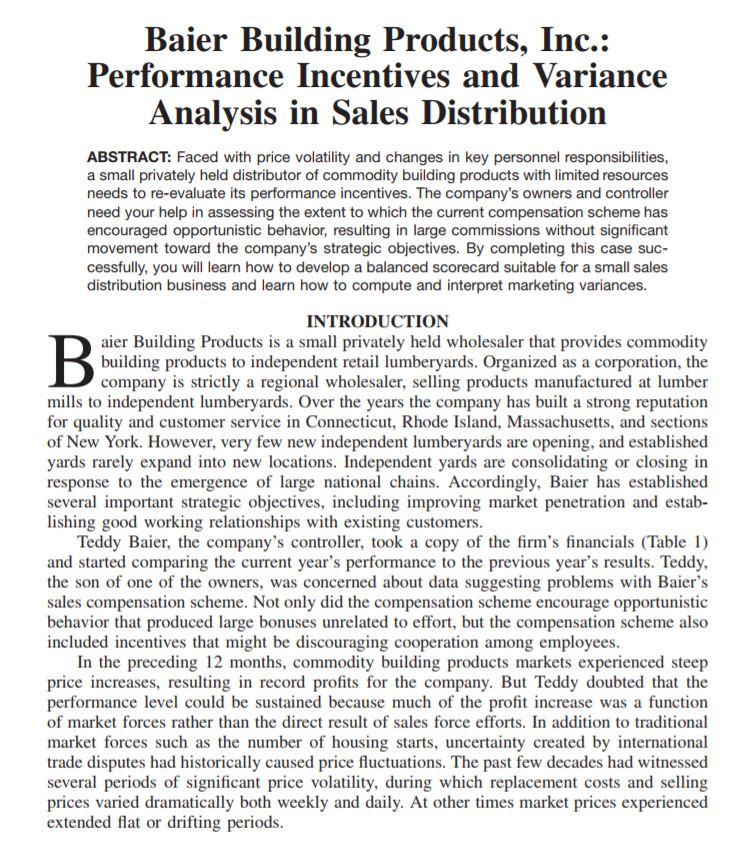

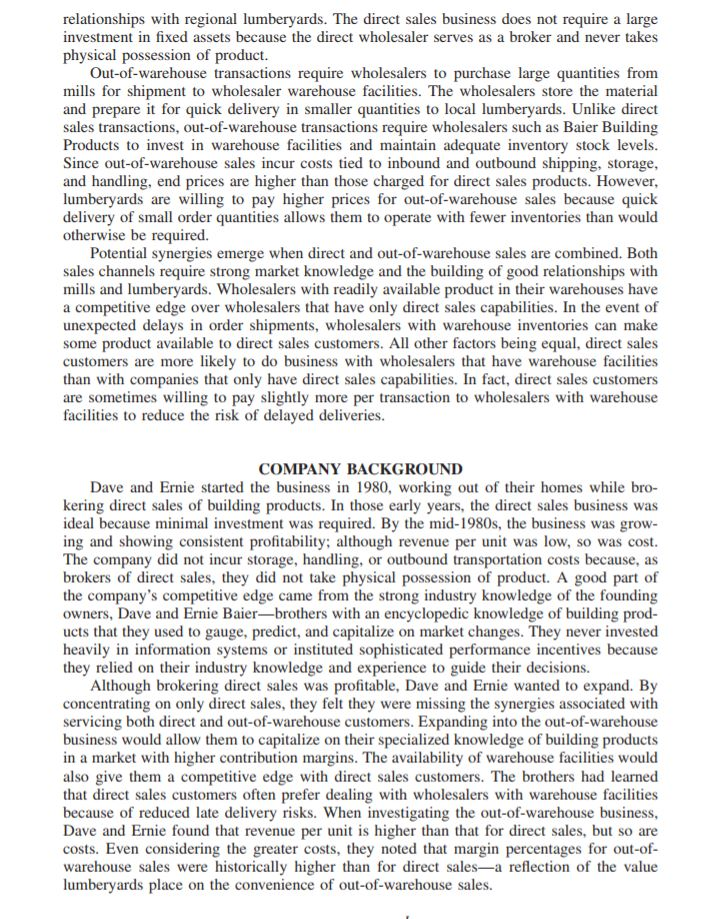
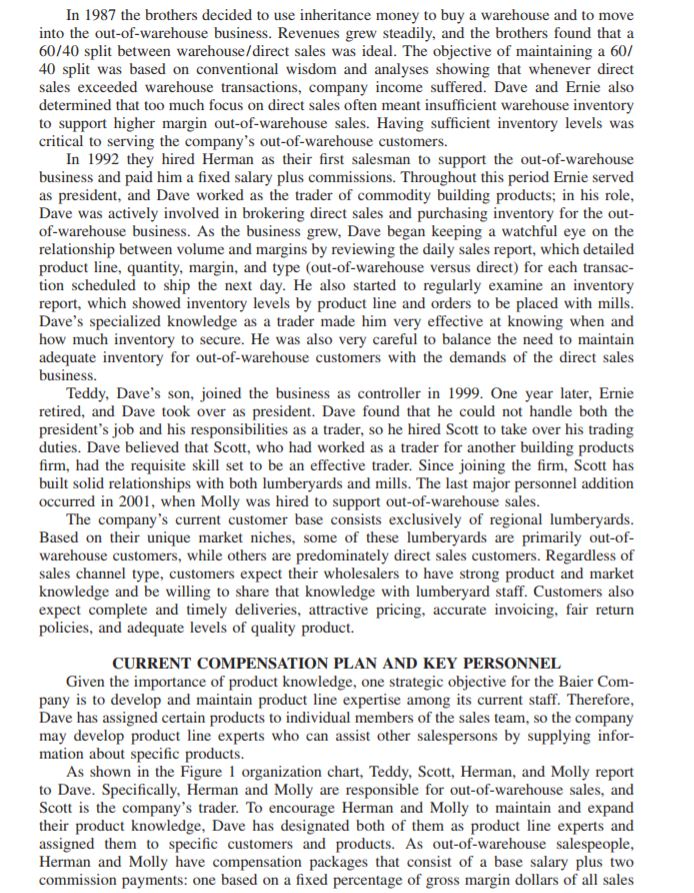
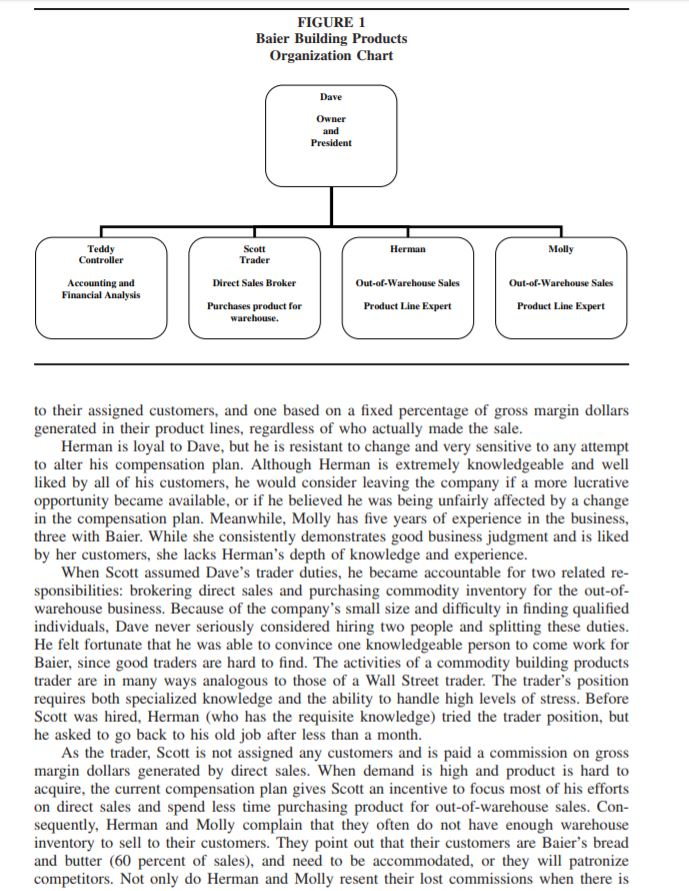
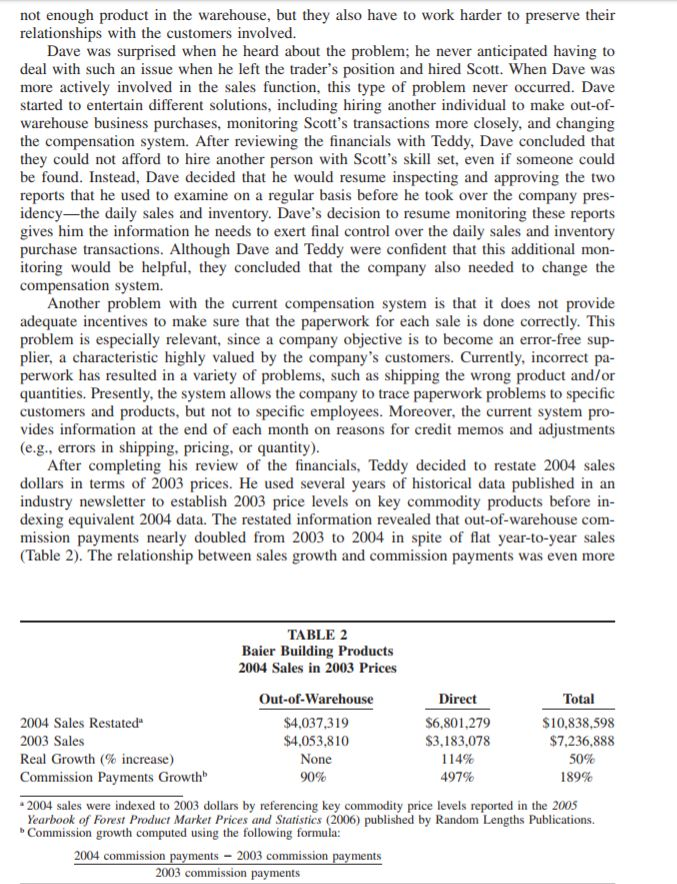
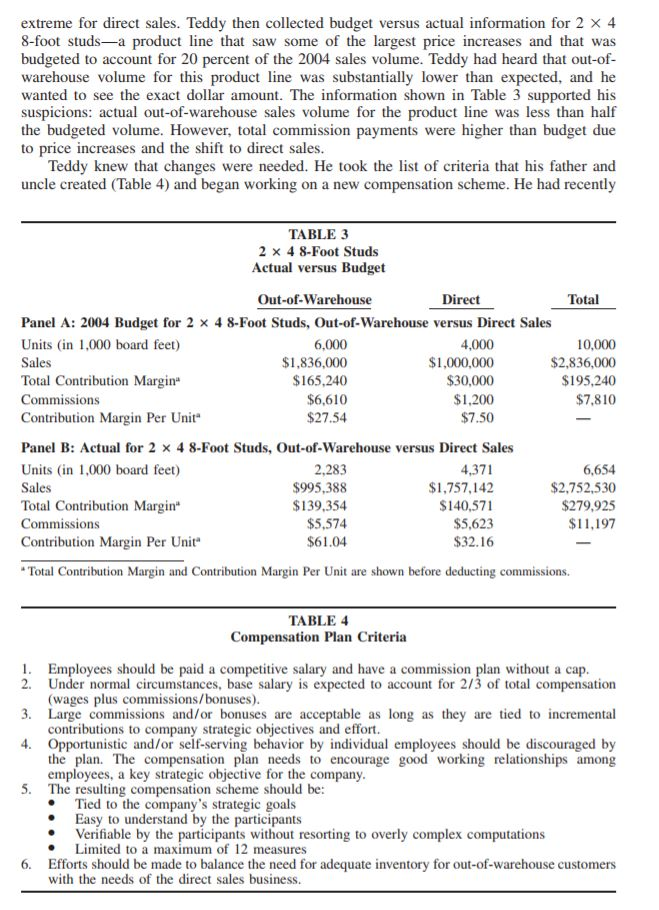

Discussion Questions
Assume the role of Teddy the controller. Before designing a new compensation plan, you wanted to better understand sales performance for the two sales channels, direct and out-of-warehouse.
1. Perform a sales performance analysis by computing all the appropriate variances using the information collected for the 2x4 8-foot studs.
2. What other information (if any) would you like to have in order to perform your analysis in even more detail?
3. What insights does the analysis of sales performance provide to Dave? How does this analysis provide any insight that would be helpful in designing a new compensation scheme?
Baier Building Products, Inc.: Performance Incentives and Variance Analvsis in Sales Distribution ABSTRACT: Faced with price volatility and changes in key personnel responsibilities, a small privately held distributor of commodity building products with limited resources needs to re-evaluate its performance incentives. The company's owners and controller eed your help in assessing the extent to which the current compensation scheme has encouraged opportunistic behavior, resulting in large commissions without significant movement toward the company's strategic objectives. By completing this case suc cessfully, you will learn how to develop a balanced scorecard suitable for a small sales distribution business and learn how to compute and interpret marketing variances. INTRODUCTION aier Building Products is a small privately held wholesaler that provides commodity building products to independent retail lumberyards. Organized as a corporation, the company is strictly a regional wholesaler, selling products manufactured at lumber mills to independent lumberyards. Over the years the company has built a strong reputation for quality and customer service in Connecticut, Rhode Island, Massachusetts, and sections of New York. However, very few new independent lumberyards are opening, and established yards rarely expand into new locations. Independent yards are consolidating or closing in response to the emergence of large national chains. Accordingly, Baier has established veral important strategic objectives, including improving market penetration and estab- lishing good working relationships with existing customers. Teddy Baier, the company's controller, took a copy of the firm's financials (Table and started comparing the current year's performance to the previous year's results. Teddy the son of one of the owners, was concerned about data suggesting problems with Baier's sales compensation scheme. Not only did the compensation scheme encourage opportunistic behavior that produced large bonuses unrelated to effort, but the compensation scheme also included incentives that might be discouraging cooperation among employees In the preceding 12 months, commodity building products markets experienced steep price increases, resuling in record profits for the company. But Teddy doubted that the performance level could be sustained because much of the profit increase was a function of market forces rather than the direct result of sales force efforts. In addition to traditional market forces such as the number of housing starts, uncertainty created by international trade disputes had historically caused price fluctuations. The past few decades had witnessed several periods of significant price volatility, during which replacement costs and selling prices varied dramatically both weekly and daily. At other times market prices experienced extended flat or drifting periods. Baier Building Products, Inc.: Performance Incentives and Variance Analvsis in Sales Distribution ABSTRACT: Faced with price volatility and changes in key personnel responsibilities, a small privately held distributor of commodity building products with limited resources needs to re-evaluate its performance incentives. The company's owners and controller eed your help in assessing the extent to which the current compensation scheme has encouraged opportunistic behavior, resulting in large commissions without significant movement toward the company's strategic objectives. By completing this case suc cessfully, you will learn how to develop a balanced scorecard suitable for a small sales distribution business and learn how to compute and interpret marketing variances. INTRODUCTION aier Building Products is a small privately held wholesaler that provides commodity building products to independent retail lumberyards. Organized as a corporation, the company is strictly a regional wholesaler, selling products manufactured at lumber mills to independent lumberyards. Over the years the company has built a strong reputation for quality and customer service in Connecticut, Rhode Island, Massachusetts, and sections of New York. However, very few new independent lumberyards are opening, and established yards rarely expand into new locations. Independent yards are consolidating or closing in response to the emergence of large national chains. Accordingly, Baier has established veral important strategic objectives, including improving market penetration and estab- lishing good working relationships with existing customers. Teddy Baier, the company's controller, took a copy of the firm's financials (Table and started comparing the current year's performance to the previous year's results. Teddy the son of one of the owners, was concerned about data suggesting problems with Baier's sales compensation scheme. Not only did the compensation scheme encourage opportunistic behavior that produced large bonuses unrelated to effort, but the compensation scheme also included incentives that might be discouraging cooperation among employees In the preceding 12 months, commodity building products markets experienced steep price increases, resuling in record profits for the company. But Teddy doubted that the performance level could be sustained because much of the profit increase was a function of market forces rather than the direct result of sales force efforts. In addition to traditional market forces such as the number of housing starts, uncertainty created by international trade disputes had historically caused price fluctuations. The past few decades had witnessed several periods of significant price volatility, during which replacement costs and selling prices varied dramatically both weekly and daily. At other times market prices experienced extended flat or drifting periodsStep by Step Solution
There are 3 Steps involved in it
Step: 1

Get Instant Access to Expert-Tailored Solutions
See step-by-step solutions with expert insights and AI powered tools for academic success
Step: 2

Step: 3

Ace Your Homework with AI
Get the answers you need in no time with our AI-driven, step-by-step assistance
Get Started


